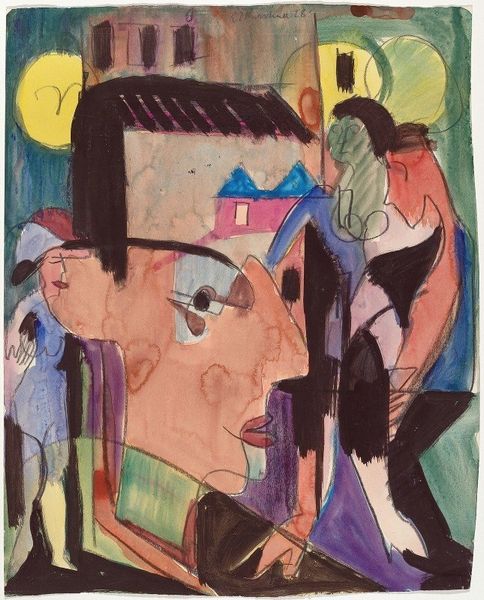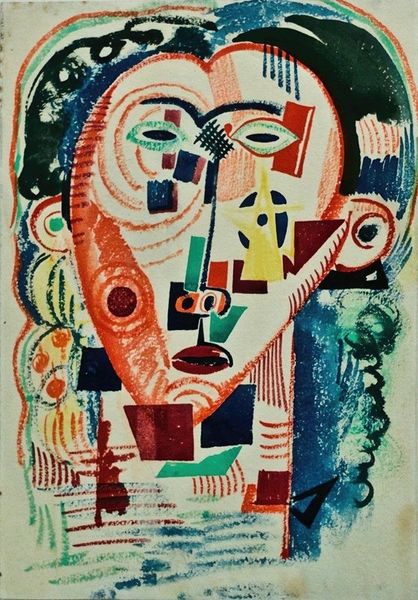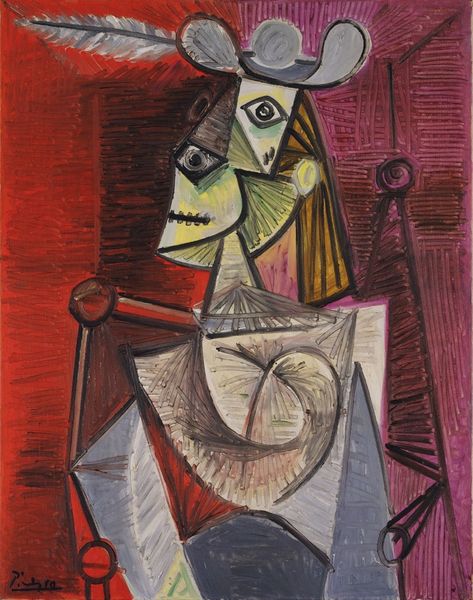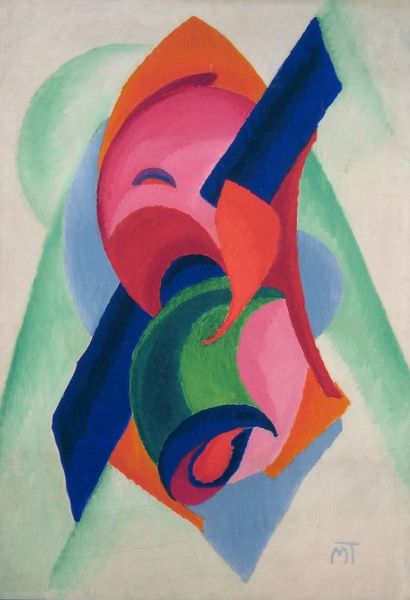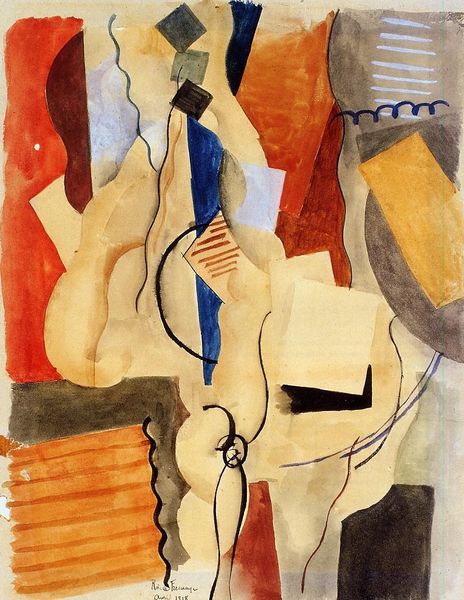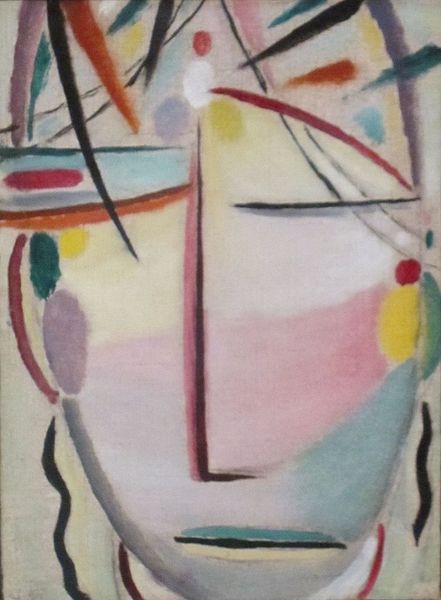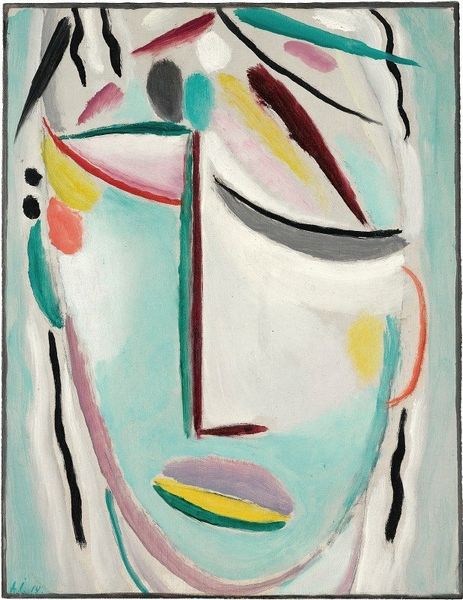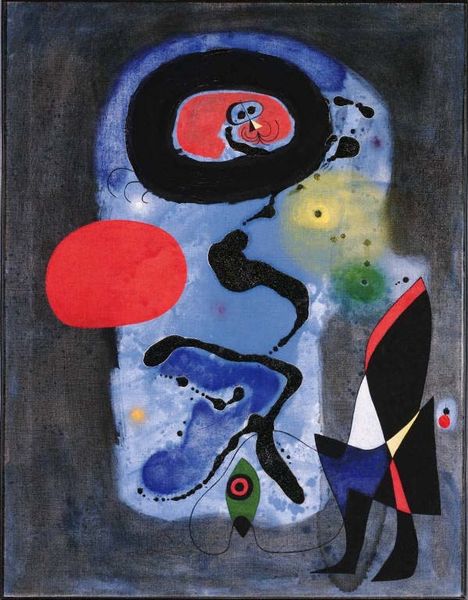
drawing, watercolor
#
portrait
#
drawing
#
self-portrait
#
german-expressionism
#
figuration
#
watercolor
#
expressionism
#
naive art
Dimensions: overall: 53.2 x 42.8 cm (20 15/16 x 16 7/8 in.)
Copyright: National Gallery of Art: CC0 1.0
Editor: This is Heinrich Campendonk's "Self-Portrait," circa 1912, a watercolor and drawing piece. It feels so fragmented and dreamlike; the colors and shapes are evocative. What do you see in this work? Curator: I'm immediately struck by the potent symbols he employs. Notice how the artist doesn't simply render a likeness, but constructs an identity. What do the geometric shapes scattered around the figure suggest to you? Editor: Perhaps the disruption or fragmentation of identity within the modern world? Or a deconstruction of traditional portraiture? Curator: Precisely. Consider how color serves not just to depict, but to emote. The redness of the cheek is an obvious symbol, but what about the prominence of yellow in the background, versus blue in the figure’s hair? Editor: I see how the yellow provides almost a halo effect. Blue then symbolizes thought or melancholy? Curator: One could argue that it relates back to earlier iconography of halos or heavenly garments – but inverted here, pointing inward. The palette, too, is powerful. It is like a painter creating his self-image as much through color choices than realistic depiction. It speaks to artistic self-awareness, creating one's symbolic image through the artistic materials themselves. Do you think this emphasis would resonate with its contemporary audience? Editor: Absolutely. It offers insight into the psychological weight art and creation carried at the time. This perspective shifted my entire interpretation! Curator: The emotional charge is precisely Campendonk's intention! Symbolism and material considerations coalesce here to reveal cultural anxieties through the artist’s own lens.
Comments
No comments
Be the first to comment and join the conversation on the ultimate creative platform.

